The Lut Desert is a vast desert encompassing about 10% of Iran’s territory. Recognized as one of the world’s driest and hottest regions, it spans an area of 120,000 square kilometers. This region is filled with mysteries.
This scorching and mysterious expanse has been so captivating that it became Iran’s first natural feature to be listed as a UNESCO World Natural Heritage site. Join us to learn more about the Lut Desert, this ancient and warm land.
Currently, Shahdad and the Kaluts of Shahdad are the only access route to the Lut Desert for enthusiasts. Traveling to other parts of the Lut, apart from the Kalut area around Shahdad, lacks the necessary safety factors for tourism.
Different Parts of the Lut Desert
The Lut Desert is predominantly a lowland area with asymmetric elevation and geographical features; therefore, due to the unevenness and distribution of geographical features, geologists naturally divide it into three parts:
Northern Lut
The northernmost part of the Lut, which covers a large area in the South Khorasan province and around Birjand, known as “Lut Khorasan” and “Lut Birjand”, is a vast area. Its elevation in the northernmost points reaches 1,000 meters and decreases to 500 meters as it progresses southward.
Northern Lut is a sandy and gravelly area, the southern part of which consists of irregular cuts leading to the “Shur River of Birjand.” What attracts the most attention in this area are the sedimentary and volcanic hills that have caused numerous earthquakes in Northern Lut.
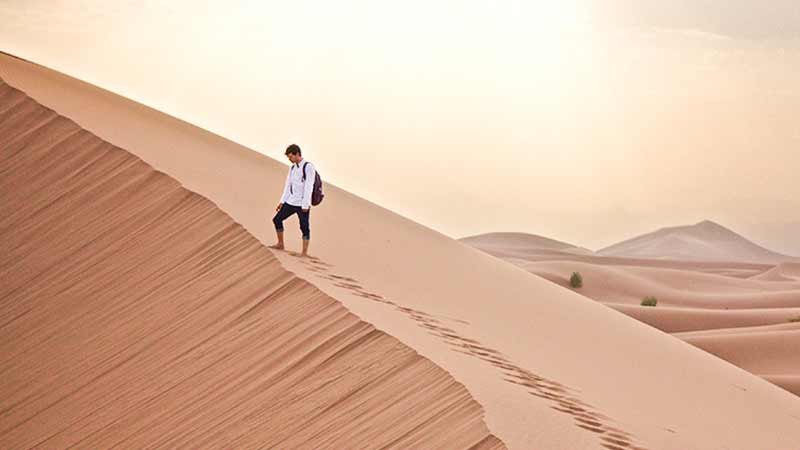
Central Lut
Undoubtedly, the most distinct part of the Lut Desert can be considered its central part. This area, which is 162 kilometers long and 52 kilometers wide and also known as the “Lut Pit,” is covered with massive and interconnected sand masses. In Central Lut, salt and gypsum deserts are sporadically observed, one of which is the “Malik Mohammad Desert” in the west of “Rig Yalan.”
Southern Lut
The southernmost region of the Lut Desert, which in terms of vegetation and traces left from ancient civilizations, is more fertile than its other parts. This area, known as “Lut Zangi Mohammad,” covers a large part of Kerman province and the north of Sistan and Baluchestan, and in terms of geomorphology, is divided into three separate parts:
Dasht-e Sarr
This area, leaning towards the center of the Lut Desert, has many enthusiasts. Dasht-e Sarr is bordered to the west by the Kaluts and Kalutak, to the north by the Shahdad-Nehbandan communication route and the areas of Balazard and Pozeh Kal, to the east by Rig Yalan, and to the south by Hamun Shur and Southern Lut. This area, referred to as Hamada in foreign sources, is covered with large and small stones as if placed side by side by skilled craftsmen. Hence, Dasht-e Sarr is also called the stone pavement of the desert. The reason for the formation of such an area, devoid of any vegetation, is wind erosion, severe temperature changes, and erosion by running waters.
Kaluts
Kalut is a local term referring to deep trenches and massive sand pyramids formed by soil erosion, considered a unique phenomenon in the world. The area where the Kaluts of the Lut Desert are located is 42 kilometers from Shahdad and spans an area 80 kilometers wide and 145 kilometers long. The reason for the formation of these spectacular Kaluts, perhaps the main attraction of the Lut, is erosion by the Shur River and the 120-day winds of Sistan.
Sand Dunes: In the eastern part of Central Lut, in an area of 50,000 hectares, there are sand dunes. The height of some of these crescent-shaped or barchan dunes is estimated to be up to 500 meters.
Is the Lut Desert the Hottest Place on Earth?
Temperature is a relative and variable phenomenon, and undoubtedly, attributing the title of the hottest point on Earth to a place is not easily possible. The quotes about the hottest point on Earth and the Lut Desert are very different; however, according to reports, in 2005, NASA’s Aqua satellite infrared radiometer measured the temperature in the central areas of the Lut Desert at 70.7 degrees Celsius.
In general, the iron compounds in the Earth’s surface and the dark sands of the Lut Desert are considered the reasons for its very high temperature. However, the blowing of the 120-day Sistan winds in the summer season itself plays a role in stabilizing and moderating the temperature of this area.
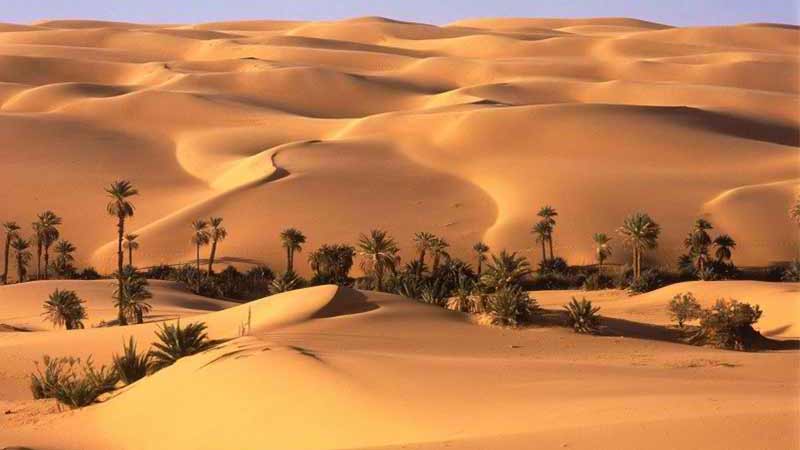
Flora and Fauna of Lut Desert
It seems unlikely that there is any plant or animal life in the central areas of the Lut Desert; however, during certain times of the year when the climate is more favorable, temporary and sporadic life can be observed. For example, in the spring season in the Dasht-e Sar area, after seasonal rains, grasses grow but soon wither and dry up.
Unlike the barren central regions, the Rig Yalan area contains various sand-loving plants including Eskanbil, Tagh, and Nesi. Plant density in the eastern Lut is considerably higher. Moreover, around 20 kilometers from the Shahdad region, tamarisk trees and shrubs are noticeable.
Lut Desert at Night
As expected, there is a significant temperature difference between day and night in the Lut Desert. One reason for the nighttime temperature drop is the absence of proper vegetation, as plants play a crucial role in influencing the climate of any region. Since no photosynthesis occurs in these areas, the temperature decreases. Another reason is that the daytime heat in the desert is not absorbed, as sand and gravel are not good insulators for storing solar heat.
However, what distinguishes Lut from other desert areas is the presence of the 120-day Sistan winds in summer, which prevent temperature increases during the day and decreases at night. These winds effectively moderate the temperature of Lut. Despite all this, the night sky of the desert is a paradise for astronomers, and the pristine nature of Lut compared to other Iranian deserts attracts photographers, astronomers, and researchers.
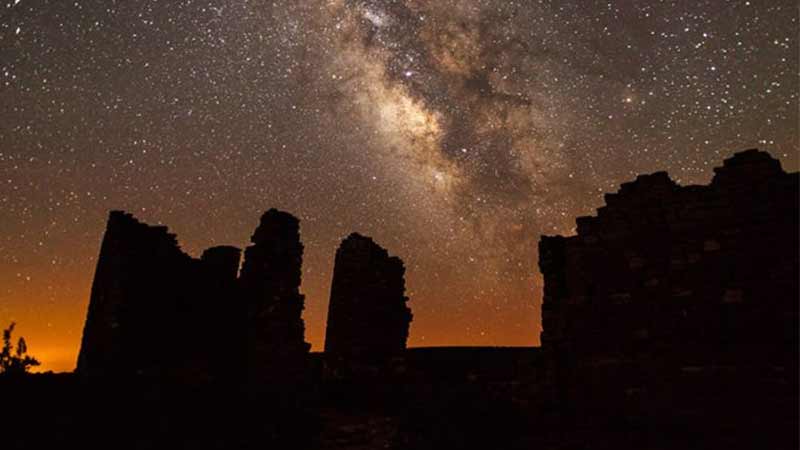
Mysteries of Lut Desert
Parts of these Kaluts have never seen human footprints and are full of unknowns. However, around these Kaluts and other peripheral areas of the Lut Desert and Shahdad, artifacts from ancient civilizations dating back to 3000 BC have been discovered, including pottery and stone vessels.
What makes the Lut Desert mysterious and unique is its deep historical background and many unknowns. It can be confidently said that none of the residents around Lut have ever crossed it, and you will find few who can provide more information than just warning of potential dangers. The numerous unknowns and lack of sufficient information have led to many legends and fantasies about the Lut Desert, especially its central regions. The most significant reason for Lut’s difference from other desert areas and its inaccessibility is the severe lack of vegetation. While water sources in the Lut Desert are not insufficient, in a radius of 500 kilometers, not even a single shrub may be seen.
The Lut Desert is considered the most impassable desert in the world. It’s interesting to know that a camel can withstand 20 days without water, but only three days without food, making access to the depths of Lut historically impossible. Other reasons for the region’s mystery include fierce storms that prevent people from reaching it. This has led to a lack of information, maps, and images of central Lut, keeping mythical stories alive among some desert dwellers.
Lake of Lut Desert
It might seem hard to imagine that flowing waters exist in the Lut area, but this is true, and interestingly, there are quite a few of these watercourses, especially in the peripheral areas of the desert. The appearance of dried riverbeds and soil erosion in the central basin of the river indicates the presence of ancient and once water-rich rivers in the area. These rivers probably still gain a hint of water during seasonal rains.
In the western regions of the Lut Desert, due to the proximity of the high mountains of Kerman to this vast desert, several rivers originating from the mountains enter the central basin. Most of these rivers have relatively sufficient water throughout the year. The Shoor River in the northwest also has abundant water. The waters of the Shoor River eventually spread over the ground in the basins between the Kaluts, keeping the land moist almost all year round.
Water sources in the Lut Desert are not limited to these; around Shahdad, two other major rivers also flow towards Lut, a small amount of their water is used for agriculture.
Interestingly, due to significant seasonal rainfall in 2009, a lake was formed in the Shahdad area, astonishing everyone. Lake Shahdad, named “Javan Namaksar,” is so beautiful that it attracts visitors and gifts its turquoise color to the burning desert. This lake was formed on the road from Shahdad to Nehbandan and submerged a large part of the road, making it impassable.
The Antiquity of Shahdad’s Kaluts
The Kaluts have been carved by wind and water erosion over 20,000 years, and this natural artwork has remained to this day. The reason for such unique erosion is the presence of sands and sand dunes around the Shahdad area; the sand and gravel, carried by wind and storms, have polished the rocks over many years. The Shoor River of the Lut Desert has also played a role in shaping such features, like an ancient and patient potter.
It’s also interesting to know that the lowest point in the Iranian plateau, at just 56 meters above sea level, is located in the Shahdad area, adding to the region’s wonders.
The Shahdad Kaluts, spread over an area of 11,000 square kilometers, are mysterious, unknown, and awe-inspiring, as few signs of life are found in this area. It is reported that in 1965, the body of a 15-year-old cow was discovered here, having remained intact over the years due to the region’s intense heat, drying out without decomposing. The salty soil of Shahdad is also a reason for such occurrences. There are also unconfirmed reports and evidence of the discovery of marine creature fossils in the Shahdad area.
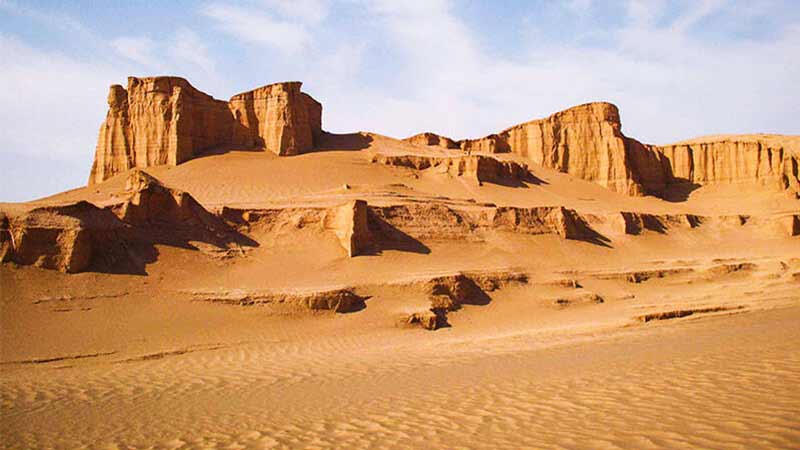
Staying on the Edge of Lut Desert
Shahdad Desert Camp
Shahdad Desert Camp, opened in the mid-2000s, is situated on the western edge of the Lut Desert. This camp, accommodating 40 people, features huts made from palm tree leaves, drinking water, electricity, a convenience store, bathroom facilities, and showers. For added security, it maintains radio communication with local law enforcement agencies.
Lut Star Eco-Camp
Lut Star Eco-Camp, launched in 2018, can host up to 80 tourists. Located 18 kilometers northeast of Shahdad and near the village of “Malekabad”, it offers not only the usual amenities but also parking, internet, tour guides, and a café. It provides services to tourists during the suitable desert tourism seasons.
While in the Shahdad area, you can also stay in numerous local homestays. These include Agigh, Kaloot, Gandom Beryan, Kashkilo, Nebka, Yadegar, Toranj, Darafsh, and Shabha-ye Por Setare.
Recreations in Lut Desert
Though the Lut Desert’s amenities and recreational opportunities are not as extensive as Iran’s central desert, its unique and distinct attractions are enough to captivate tourists. Besides viewing the mythical Kalouts and immersing in the dreams of this region, various recreational activities have been introduced for tourists in recent years.
Safari and Motorcycling in Lut
If you’re interested in off-roading and adventure in the pristine nature and unparalleled landscapes of the Lut Desert, you can rent vehicles for a delightful desert excursion.
Camel Riding
A trip to the desert seems incomplete without seeing lovely camels or perhaps enjoying a brief ride. In the Lut Desert, you can seize this opportunity.
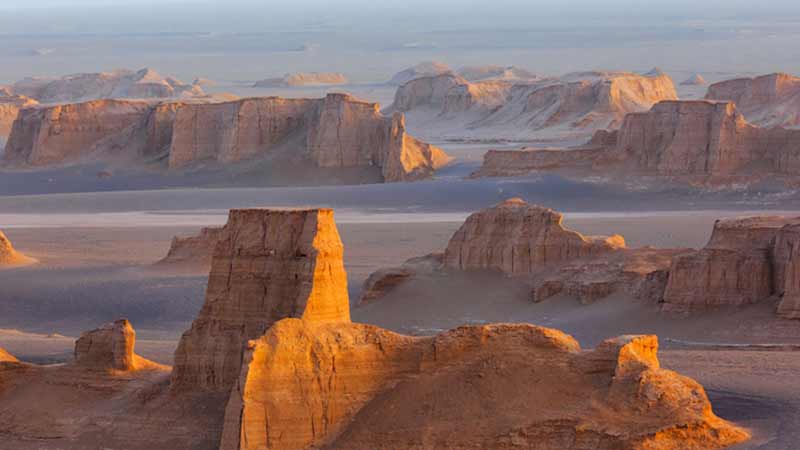
Hiking and Photography
Don’t miss the opportunity to walk alone in the desert’s mystical landscapes and protected areas. Photographing the unique Kaloots and Nebkas in Lut is an experience you won’t find anywhere else on Earth.
Stargazing in the Desert Night Sky
Observing the stars and the celestial green field at night is undoubtedly a highlight of a desert trip. If you have the chance to stay overnight in Lut, don’t miss it. Remember, staying alone in the desert at night is very dangerous; therefore, stay in one of the camps.
Conclusion
Lut Desert was recognized as Iran’s first natural heritage site by the UNESCO World Heritage Committee in Istanbul. This recognition undoubtedly increases attention to Lut and efforts to protect it. If you are a resident of the Iranian deserts or have traveled to the Lut Desert, share your experiences and feelings with us and other users.



